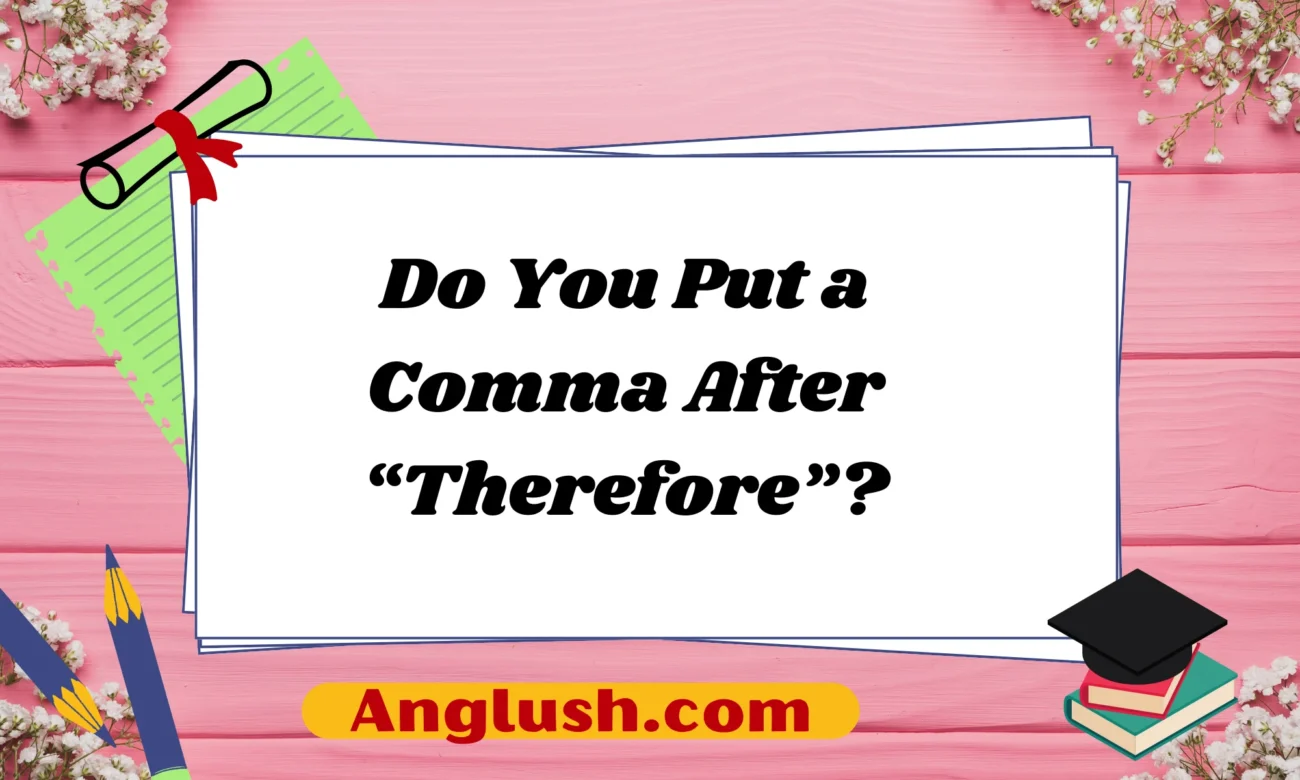Introduction
“Therefore” is a common transitional word used to indicate a logical conclusion or consequence. However, one of the biggest questions that often arises is whether or not to place a comma after “therefore.” The answer depends on how the word is used in a sentence.
In this comprehensive guide, we’ll explore the different grammatical rules surrounding “therefore,” when a comma is necessary, and how different sentence structures affect punctuation. We’ll also provide alternative words and phrases that can be used in place of “therefore” to suit various formal and informal situations.
When Should You Put a Comma After “Therefore”?
The placement of a comma after “therefore” depends on its role in a sentence. Here are the primary ways “therefore” is used and the corresponding punctuation rules.
1. When “Therefore” Is Used as a Conjunctive Adverb
A conjunctive adverb connects two independent clauses and shows the relationship between them. In this case, “therefore” is often followed by a comma.
Examples:
- The weather forecast predicts heavy rain; therefore, we should bring an umbrella.
- She did not study for the exam; therefore, she did not pass.
In these cases, the semicolon before “therefore” separates the two independent clauses, and the comma after it helps indicate a slight pause before continuing the thought.
2. When “Therefore” Begins a Sentence
If “therefore” starts a sentence, it should always be followed by a comma.
Examples:
- Therefore, we need to find an alternative solution.
- Therefore, I believe we should reconsider our decision.
The comma after “therefore” helps clarify the logical flow of the sentence, making it easier to read.
3. When “Therefore” Is Used in the Middle of a Sentence
When “therefore” appears in the middle of a sentence, it is typically set off by commas if it interrupts the flow of thought.
Examples:
- The company, therefore, decided to delay the product launch.
- His explanation was unclear and, therefore, difficult to understand.
Here, “therefore” acts as a parenthetical element, meaning it is additional information rather than a necessary part of the sentence. The commas help signal this to the reader.
4. When “Therefore” Does Not Require a Comma
In some cases, “therefore” does not need a comma. This occurs when it directly modifies the verb without interrupting the sentence flow.
Examples:
- We must therefore consider all possible options.
- She will therefore be responsible for the final decision.
Since “therefore” smoothly integrates into the sentence, a comma is unnecessary.
Alternatives to “Therefore”
While “therefore” is a useful transition word, using it repeatedly in writing can make sentences sound repetitive. Here are several alternatives based on different tones and contexts.
Formal Alternatives
For professional or academic writing, consider these alternatives:
- Thus – “She missed several deadlines; thus, her promotion was postponed.”
- Consequently – “He failed to submit the report on time; consequently, he was penalized.”
- As a result – “Sales declined last quarter. As a result, the company implemented new strategies.”
- Accordingly – “The data suggests inefficiency in the system; accordingly, improvements must be made.”
- Hence – “The project was not feasible; hence, it was discontinued.”
Casual Alternatives
For everyday conversation or informal writing, these options work well:
- So – “It was getting late, so we decided to leave.”
- That’s why – “I forgot my wallet. That’s why I couldn’t pay.”
- Then – “She was tired, then she went to bed.”
- For this reason – “The restaurant had bad reviews; for this reason, we chose another place.”
- Because of that – “The traffic was heavy; because of that, we arrived late.”
How to Choose the Best Alternative
The best substitute for “therefore” depends on the tone and formality of your writing. Here’s a guide to help you decide:
- Use formal alternatives when writing research papers, reports, or emails in a professional setting.
- Use casual alternatives in friendly conversations, text messages, or social media posts.
- Avoid overly complex words when speaking or writing for a general audience to ensure clarity.
10 Texting Examples Using Alternatives to “Therefore”
When texting, simplicity and clarity are key. Here are ten user-friendly examples that work well in digital communication:
- I forgot to set my alarm. That’s why I was late.
- We were out of eggs, so I couldn’t make breakfast.
- She was feeling sick; hence, she stayed home.
- The store was closed. As a result, we had to go somewhere else.
- Traffic was terrible; consequently, I missed my appointment.
- It was raining, so we canceled the picnic.
- I didn’t study much; therefore, I didn’t do well on the test.
- She didn’t answer my call. Because of that, I had to go without her.
- The Wi-Fi wasn’t working; thus, I couldn’t join the meeting.
- I was exhausted; for this reason, I went to bed early.
These examples demonstrate how to use various alternatives to “therefore” in everyday texting while keeping messages clear and concise.
Conclusion
Understanding when to place a comma after “therefore” is essential for proper grammar and sentence clarity. The key rules to remember are:
- Use a comma after “therefore” when it functions as a conjunctive adverb or starts a sentence.
- Set it off with commas when it interrupts a sentence.
- Avoid a comma when it directly modifies a verb.
Additionally, varying your word choice by using alternatives to “therefore” can enhance the readability and tone of your writing. Whether you’re writing formally or casually, selecting the right transition word ensures clear communication.

